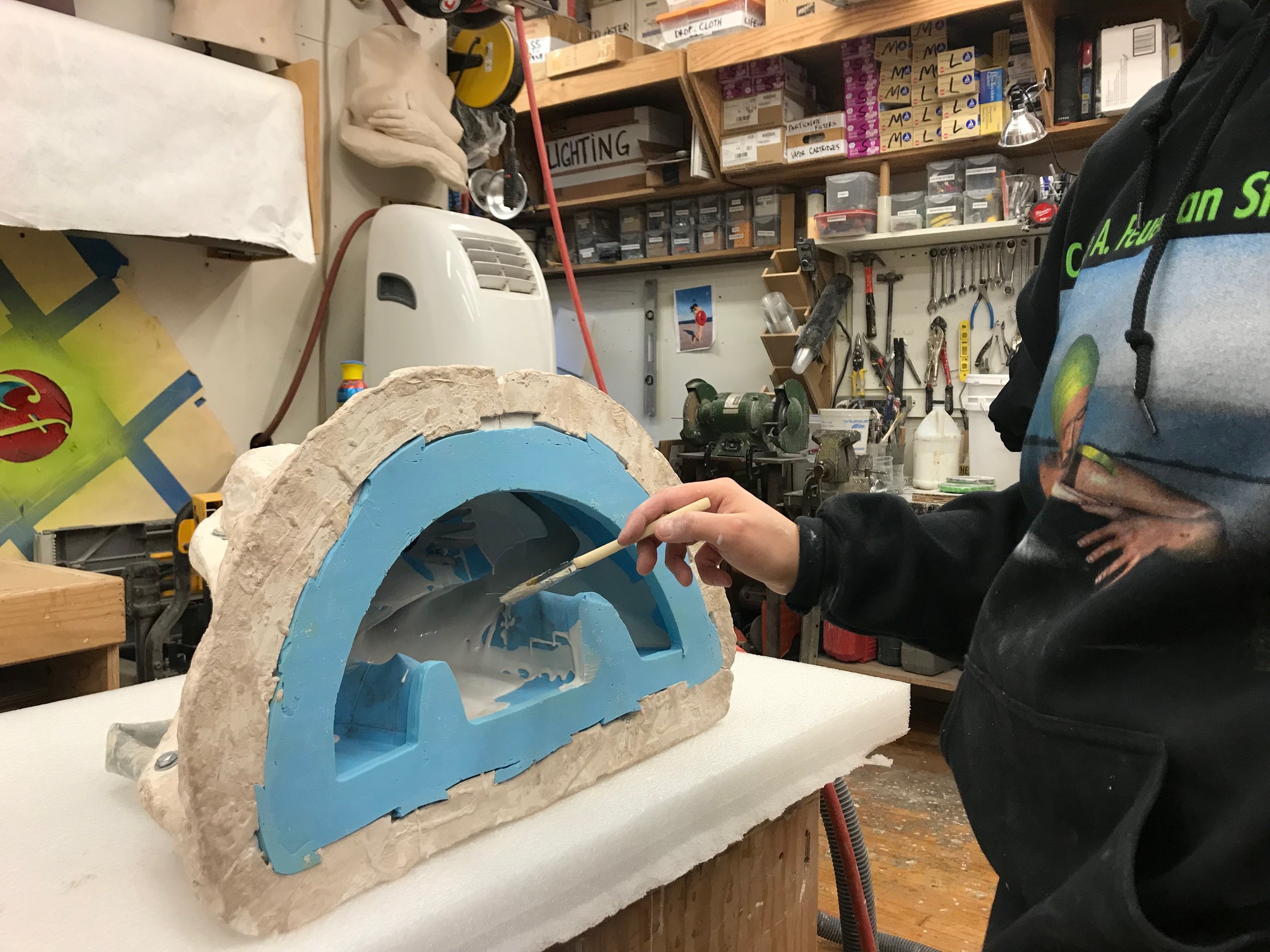After three weeks of work in the studio, intern Craig writes about some of Carole’s pieces and the jobs he’s been working on.
Three weeks now! It hasn’t been so many days, with Christmas and the new year, but I’ve gotten more comfortable working in this studio and going between my head and my hands in the different tasks I’m doing around here.
We packed a giant woman into four crates on Tuesday. She’s called DurgaMa, and she sits cross legged with her shoulders back on top of a flower. Each petal had to be wrapped individually with Tyvek and foam, so that’s what I spent most of the day doing. DurgaMa ignored me the whole time, half in a box and locked into her contemplation. We’re sending her across the country to Los Angeles, to a show called INTO ACTION!
According to it’s organizers, INTO ACTION! “is a celebration of community power + cultural resistance, bringing together hundreds of the nation's top visual artists, activists and influencers for creative installations, powerful panels, and music performances,” and is starting already this Friday the 13th. In this weather, I was thinking about crawling into the crates with her.
Rob and Mathew pack a crate with DurgaMa's petals.
A couple millennia ago, after Alexander’s empire fell apart, it was succeeded by a bunch of different Greek speaking kingdoms. In the far east of the Hellenistic world were the Bactrian Kingdom and the Indo-Greek kingdom, and life in these kingdoms combined the conquering Hellenic culture with local traditions and practices. The first anthropomorphic depictions of the Buddha come from this era. These religious sculptures would be covered in schist so that they could be detailed down to the fingernails.
DurgaMa is syncretic, like the Hellenistic Buddhas. On one hand, she is named after an aspect of Devi from the Shakti tradition of Hinduism, the warrior and creator goddess Durga. On the other hand, this woman wears a one piece bathing suit linking her to the rest of Carole’s Swimmers series. The curator Simeran Maxwell writes that the “graceful upturned faces” of Carole’s sculptures “present proud and confident women who revel in personal triumph and erotic liberation and in the sensual quality of water.” Durga defeated the invincible buffalo demon Mahishasura after a ten day battle. Maybe the contemplating woman depicted in DurgaMa is quietly sitting in the triumph of restoring balance after her own ten day battle with demonic forces.
DurgaMa, assembled.
Maybe she was dealing with frozen pipes. As I’m sitting here in the studio writing about DurgaMa, I can see a blizzard that’s being called a “bomb cyclone” come down through the window. I’m wrapped up in my biggest sweater and two pairs of pants. It’s dissonant to look at and think about Carole’s swimsuit clad figures in the thick of a New York winter, the dissonance that comes from having your visual understanding of a situation contradicted by information that you get in other ways.
Even without a blizzard, that dissonance is always present in Carole’s work. It defies expectations to see drops of water that will never slide or dry, to see people that will always be relieved at their escapes but never get emotional distance from the moment.
Yesterday a senior fabricator, Natasha, started teaching me how to do the lay-up of one of Carole’s sculptures, a Mini Serena. Serena is resting on an inner tube, her head on her arm. She looks tired and self-satisfied. One of the artists here, Heath, said he saw in it the story of a woman who has escaped abuse and created a new life for herself, and is resting in that moment of security she has created.
Natasha's torso and the Mini Serena mold.
I thought about that story as I was applying layers of resin and fiberglass to her mold, building up her substance from the outside of her skin in. Is there a metaphor there? I think so but I guess it's not about Serena's journey.
Serena self-realizes, and it's impossible for me as another person in dialogue with her to replicate her self-realization. Instead I have to begin at the level of her skin to work down to the things that give her strength and solidity. If viewers can take that time to explore the narrative of an art object they interact with, exploring that object's material and spiritual reality, then they can learn what techniques they need to use inside themselves to replicate what they find appealing in that object. I'm attracted to Serena's floating, mobile self-security; maybe in understanding her production I can find that security for myself.
—Craig Hartl





